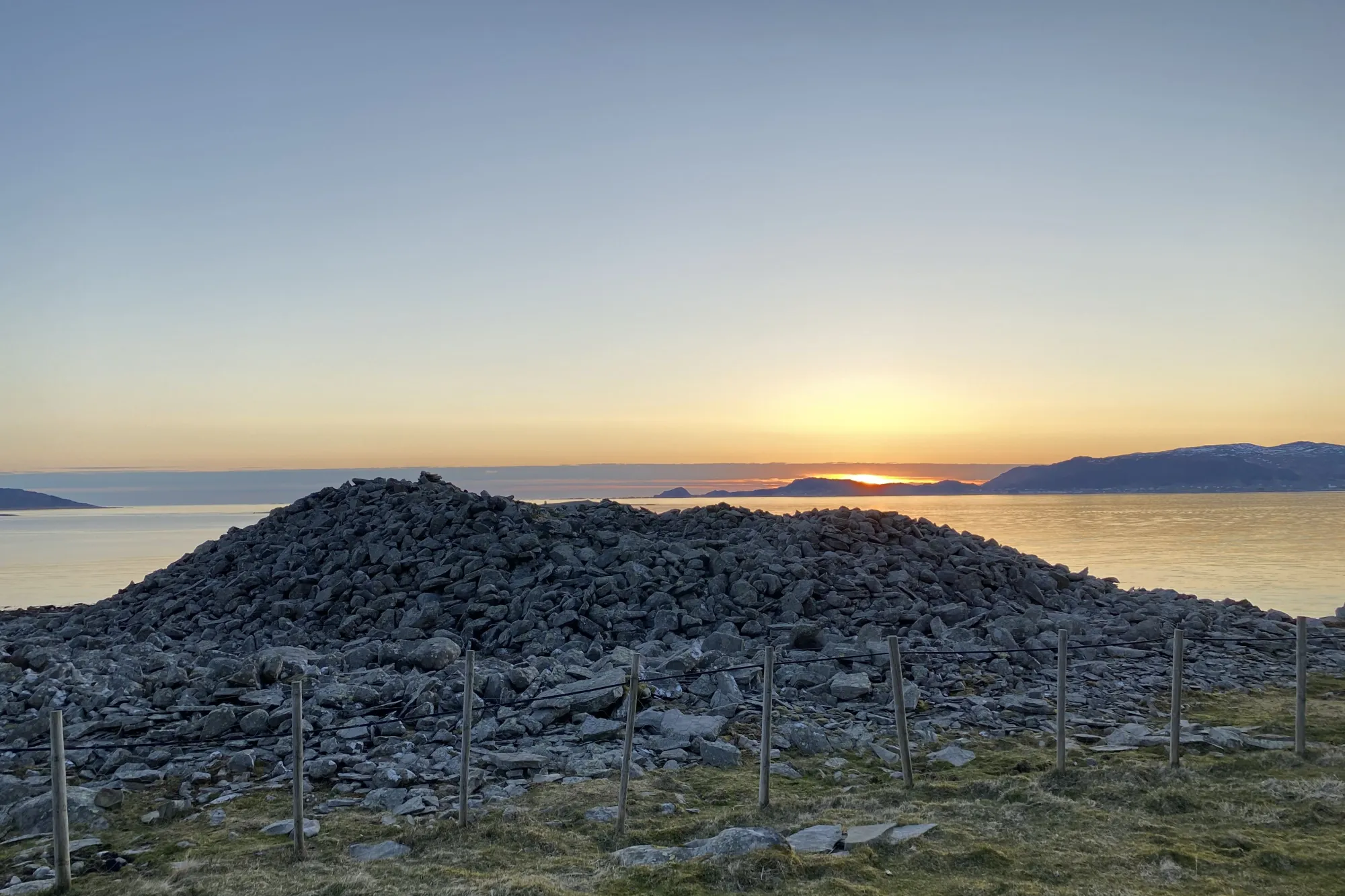
The burial mounds in Botnane
The four large burial mounds in Botnane are among Norway’s most significant and best-preserved cultural monuments from the Bronze Age.
In 2021, the burial mounds were signposted and made more accessible for visitors. In connection with that work, the Botnane and Årebrot community association wanted the entire Botnane-Årebrot burial ground landscape to be seen as a whole.
On 30 May 2021, a cultural heritage trail, with five information signs, was opened in Botnane by Jon Askeland, the county mayor of Vestland.
In the stretch between Botnane and Årebrot, forty Bronze and Iron Age burial mounds were registered in 1956-57. In
On 30 May 2021, a cultural heritage trail, with five information signs, was opened in Botnane by Jon Askeland, the county mayor of Vestland.
In the stretch between Botnane and Årebrot, forty Bronze and Iron Age burial mounds were registered in 1956-57. In
In 2021, the burial mounds were signposted and made more accessible for visitors. In connection with that work, the Botnane and Årebrot community association wanted the entire Botnane-Årebrot burial ground landscape to be seen as a whole.
On 30 May 2021, a cultural heritage trail, with five information signs, was opened in Botnane by Jon Askeland, the county mayor of Vestland.
In the stretch between Botnane and Årebrot, forty Bronze and Iron Age burial mounds were registered in 1956-57. In the south, the burial mounds are like pearls on a string along the trail.
All burial mounds and other cultural heritage sites that predate the Reformation (1536) are automatically protected as part of Norway’s common cultural heritage. The protection of cultural heritage sites was the first law passed by Storting, the Norwegian Parliament, in 1905.
At the end of the 1960s, the four large burial mounds in Botnane were put on an exclusive list. A nationwide proposal was submitted that was intended to safeguard the future of Norway’s most important cultural heritage. The sites selected had an international level of importance. They were to be safeguarded through extensive conservation and restoration.
However, the proposal was not enacted because the Planning and Building Act made it possible to regulate and safeguard cultural heritage sites. Nowadays, cultural heritage sites are called automatically protected cultural heritage sites.
Five information signs along the trail
There are three information signs in Botnane – in Nordbotnen, Sørbotnen and on Opnarhella. Further south, there are over thirty burial mounds in just eight kilometres on the stretch between Storevika and Årebrot. There is an information sign at Seljestokken, a farm with a total of ten burial mounds. The last information sign is on the quay at Villevika at the end of the car road.
There’s information about the conservator Per Fett, who thoroughly recorded the burial mounds in 1956-57. It was part of his major work mapping the settlement of Western Norway.
Finally, there is information about the work and voluntary efforts to make these important cultural monuments more accessible to visitors. The cultural heritage sites in question are mainly from the Bronze and Iron Ages, but also from other periods.
On 30 May 2021, a cultural heritage trail, with five information signs, was opened in Botnane by Jon Askeland, the county mayor of Vestland.
In the stretch between Botnane and Årebrot, forty Bronze and Iron Age burial mounds were registered in 1956-57. In the south, the burial mounds are like pearls on a string along the trail.
All burial mounds and other cultural heritage sites that predate the Reformation (1536) are automatically protected as part of Norway’s common cultural heritage. The protection of cultural heritage sites was the first law passed by Storting, the Norwegian Parliament, in 1905.
At the end of the 1960s, the four large burial mounds in Botnane were put on an exclusive list. A nationwide proposal was submitted that was intended to safeguard the future of Norway’s most important cultural heritage. The sites selected had an international level of importance. They were to be safeguarded through extensive conservation and restoration.
However, the proposal was not enacted because the Planning and Building Act made it possible to regulate and safeguard cultural heritage sites. Nowadays, cultural heritage sites are called automatically protected cultural heritage sites.
Five information signs along the trail
There are three information signs in Botnane – in Nordbotnen, Sørbotnen and on Opnarhella. Further south, there are over thirty burial mounds in just eight kilometres on the stretch between Storevika and Årebrot. There is an information sign at Seljestokken, a farm with a total of ten burial mounds. The last information sign is on the quay at Villevika at the end of the car road.
There’s information about the conservator Per Fett, who thoroughly recorded the burial mounds in 1956-57. It was part of his major work mapping the settlement of Western Norway.
Finally, there is information about the work and voluntary efforts to make these important cultural monuments more accessible to visitors. The cultural heritage sites in question are mainly from the Bronze and Iron Ages, but also from other periods.
Info:
- Phone number (booking): +47 932 37 073
- Phone number: +47 932 37 073
- Contact person name: Bremanger turistinformasjon / Botnane og Årebrot Grendalag
- Contact person email: asmund.berthelsen@ilcoud.com
Attributes
Summer
Winter
Spring
Autumn

